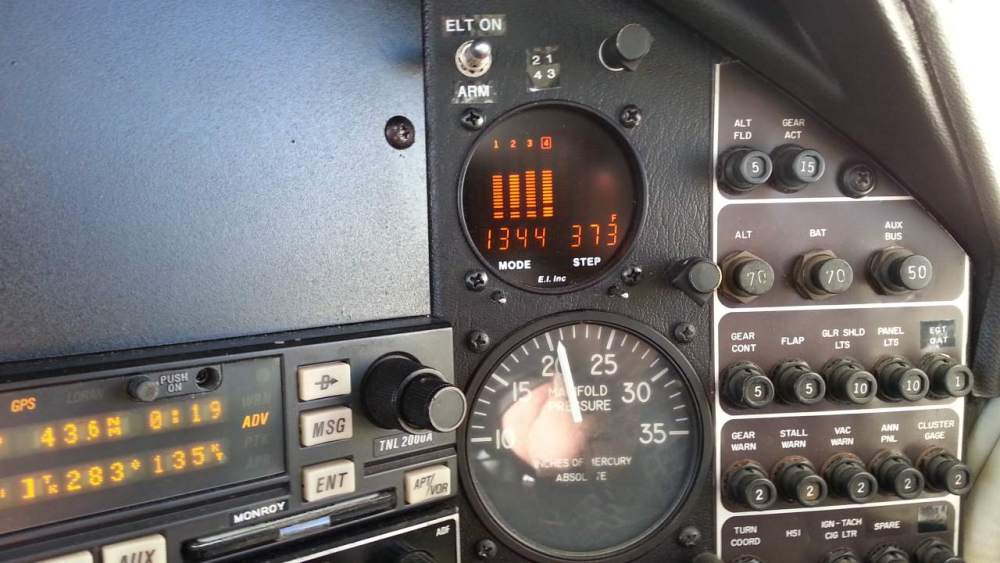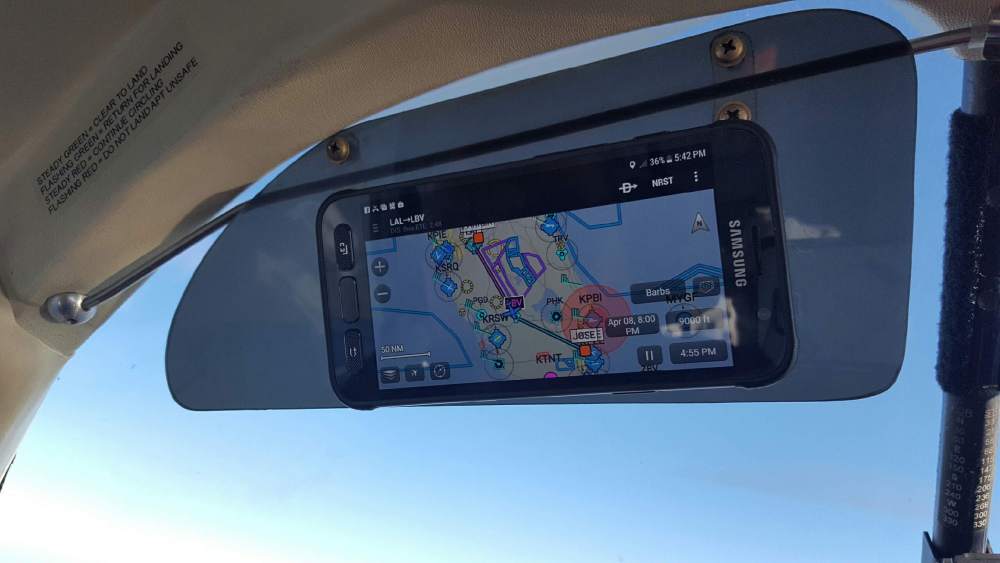-
Posts
4,785 -
Joined
-
Last visited
-
Days Won
19
Content Type
Profiles
Forums
Blogs
Gallery
Downloads
Events
Store
Everything posted by Piloto
-
The Tempest massive will lean beyond peak without any vibration, just power reduction. Just try them. José
-
Try the Tempest massive. They perform and last the same as the fine wire for one third the cost. I did the test on my IO-360. However cannot say the same about the Champion massive. They use to foul, build carbon deposit and wear quicker. I was very much impress with the Tempest massive. Unlike the Champions I notice no roughness or RPM differential on runup with the Tempest massive after 900 hours in use. José
-
I prefer the massive electrode plugs. Rugged and reliable, no spot welded skinny electrodes, but machined rugged electrodes. José
-

Looking for input to modify Mooney for short copilot
Piloto replied to BrianW's topic in General Mooney Talk
Try these ones, no STC required. https://www.tallmenshoes.com/bcasual.html José -
The pressure should be in the middle of the green arc or about 20psi. As the electric pump ages the pressure will drop. During run up always check fuel pressure. A low fuel pressure can cause engine stall during takeoff. This is why the electric pump must be on during takeoff, specially at high altitude. On the turbo M20M the fuel pressure goes down at altitude and the electric pump must be turn on to keep the pressure high. José
-
With the engine off, full throttle and mixture you should see fuel dripping down from the sniffle valve hose when the electric pump is running. Fuel pressure drop is an indication of a minor crack on the engine pump diaphragm. This crack will grow. A 14psi electric pump fuel pressure is an indication of pump wear. When the pressure is just below 14psi you may have a hard time starting the engine in cold weather. If the engine pump fails to deliver enough pressure a weak electric pump may be unable to keep the engine running at high power during takeoff. José
-
If after landing you did not turn the electric fuel pump off excess fuel will be drained. Fuel may be coming from the engine fuel pump breather line. To check for pump leak do the following: 1. Open throttle and mixture (full forward) 2. Turn on the electric pump and watch fuel pressure. 3. With the pump running close mixture and throttle. 4. Turn pump off. 5. Check fuel pressure is holding for at least a minute. If fuel pressure drops in less than a minute the engine fuel pump may have a cracked diaphragm. Check fuel pump breather line for fuel. Fuel pressure drop could also be caused by a leak on the lines or the fuel servo. José
-

Bolts Came Off/Sheared on #2 Cylinde
Piloto replied to Lima Whiskey's topic in Modern Mooney Discussion
In addition to previous comments the bolt failure could be caused by poor alloy during bolt manufacture. Bolt fatigue due to excessive time on the bolt. To minimize bolt stress avoid low RPM at high power settings. Any time you see oil drip on the nose wheel doors check the engine leak source. José- 18 replies
-
- cylinder
- engine problems
-
(and 1 more)
Tagged with:
-
Theoretically a TACAN should provide a 9-fold increase in accuracy compared to a VOR, but operational use has shown only an approximate 3-fold increase. TACAN operates on UHF vs VOR on VHF. UHF is less prone to atmospheric signal bending than VHF, specially under heavy weather conditions. VOR is most accurate at low elevation angles while TACAN is accurate at high and low elevation angles. https://en.wikipedia.org/wiki/Tactical_air_navigation_system José
-
On my first oceanic crossing to LECU the only thing I had was a Bendix variable tuning T12C ADF to find first Flores and then Santa Maria island for refueling. One uncertainty in my mind was my ground speed, distance and fuel available. One of the problems with variable tuning ADF is that you needed to identify the station Morse code to insure you were tuned to the right station. Being a ham radio operator that was not a problem. Wish I had an Omega navigator. Back in the 80s weather reports at Santa Maria came by an old FAX machine in which the ink faded away the moment you touched the paper.. José
-
With the upcoming of nuclear submarines able to navigate underwater for months (limited by crew food) an underwater accurate navigation systems was developed by the US Navy called Omega. Because of the low frequency operation VLF (10KHz) the signal was able to reach submarines down to 200ft. Omega was also in use by civilian surface ships and airplanes. Unlike current computerized systems today the first Omega nav receivers only provided lanes of position (phase differences) and you correlated these lanes on an Omega chart to find your position, similar to Loran A TDs. After the development of "compact" computers the navigators were able to display Lat/Long readings, initially on a teletype TTY printer. The same printer also read VLF messages on submarines. The same printer sound used by the Star Trek Enterprise ship computer. José
-
Another less expensive option is the TACAN navigation stations used by the military and civilian FMS. They provide azimuth and distance (DME) data more accurate than VOR and the ground installation is much more compact. In fact there are portable TACAN stations for military use. The TACAN aircraft antenna is just a single blade antenna same as the DME antenna. A single scanning TACAN nav receiver provides a position solution to an FMS without an INS/GPS input. Many TACAN ground transmitters are collocated with a VOR stations designated VORTAC. An INS is useless unless the position is crosscheck periodically with GPS or ground based systems. During a GPS jamming event the GPS is declared useless and ground nav systems are used by the FMS for position cross check like before GPS came to be. José
-
eLoran is another option to GPS. Unlike weak signals from the GPS satellites eLoran signals from the ground are strong and harder to jam or spoof. At 100KHz operating frequency the jammer would need a 200ft tower and a 1 KW transmitter. eLoran does not provide altitude for approaches but is good enough for LNAV approaches. Wish the Federal Government would put it back. eLoran/GPS navigators would provide a high integrity navigation solution. http://www.ursanav.com/solutions/technology/eloran/ José
-
Unlike ATC that rely only on ADS-B GPS, GA planes have windows, VOR/ILS, DME and ADF. Any good IFR pilot should always check with secondary navs, not only because of spoofing but because your GPS may not be working properly or has the wrong airport entered. Flying in the vicinity of TV towers can cause GPS interference. José
-
GPS spoofing or jamming has no major impact on the aircraft en-route navigation since most aircraft have secondary systems. Where the impact is major is on ATC systems relying on ADS-B transponder GPS position reports. An ATC systems relying on ADS-B spoofed GPS position reports that could be totally different than what the pilot visually asses could create a conflicting situation, specially at night. The pilot can always asses his position by secondary nav sources or visually. But an ATC controller relying only on ADS-B has only GPS. José
-
Don't forget to add a pilot relief tube when adding the LRT. It will make the trip more enjoyable!! José
-
The tag is to avoid mix ups at the repair station. So I know I am getting back my original unit. José
-
On modern airliners aileron droop can be modified in flight to increase lift or optimize fuel efficiency. The drooping is done by the FCC (Flight Control Computer) without pilot intervention. José
-
If you are using the flaps as reference it could be that the right flap is lower than the left flap. If the plane does not roll with hands and A/P off leave it alone. José
-
I replaced my previous LCD EGT with the UBG-16. Very happy with it. It also shows fuel flow, OAT and voltage
-

Power setting while on the clime on Mooney M20J
Piloto replied to Shawn26's topic in General Mooney Talk
The only time I throttle back my 20J is on descent. José -
Unlike a car hood which are made out of metal a Mooney cowlings on later models are made of fiberglass so a spark can go thru into the spark plug cable or P lead and damage the electronic ignition. José
-
I think I will still keep my windshield. Unlike the HUD it is very reliable and low maintenance cost. I Velcro my cell phone with Garmin Pilot to the visor to get moving map and weather right on approach. Velcro is $3.95 at Walmart. José
-
My only concern with electronic ignitions is it vulnerability to lightning strikes. Unlike traditional magneto ignitions electronic ignitions employ semiconductors. Semiconductors operate at very low voltages and are more subject to damage than contacts on a traditional ignition. You can get hit by lightning without being inside the cloud. José
-
One of the hardest turbulence to cope with is CAT (Clear Air Turbulence). It typically occurs above 30,000 ft on the boundary of the jet stream with no prior indication but a sudden jolt. During the 1990s I worked at AlliedSignal trying to find a detection mean. Thermal imaging and Doppler shift were the options. Each one had limitations and no 100% detection. José





